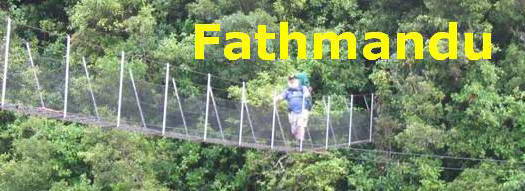|
17 June 2007
South Bethells
page 2
From here, we wander more or less aimlessly through a network of partly mown, partly trodden track.
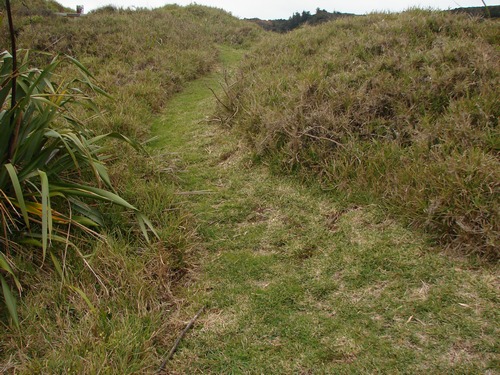
Muehlenbeckia is a prominent feature.
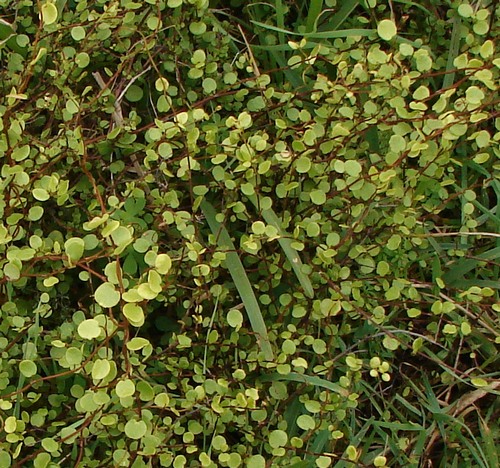
and up on the left is a bench of some sort with what looks like a plaque on it.

Well, I'll be blowed. Fortunately, this is one piece of history that we are able to follow up successfully with a little googling. Alice was a Bethell, and married William Woodward, a lawyer who held a number of administrative positions in the Pacific and in Africa throughout his life. Following his death, Alice returned to Bethells Beach.
For the obituary report, click here
Right next door is a bach which has historic connections to New Zealand painter, Don Binney.
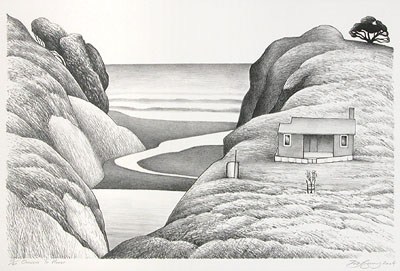
There are rather more trees round it today than Binney's picture suggests, not to mention a picket fence with a gate on which there is a sign:
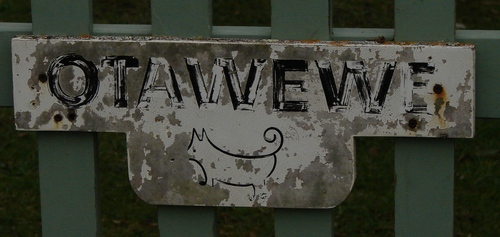
Back in the days before Eketahuna replaced Waikikamukau or Kaukoki as the name of the archetypal New Zealand country town, Maori puns like this were a good deal more common and generally acceptable than they would be today - Frank Sargeson's home was called Waiamaiea, I recollect - but probably it is as history they survive, not as common practice today.
We skirt the bach and find our way via a number of narrow grooves in the kikuyu to what looks like, and is a farm road.
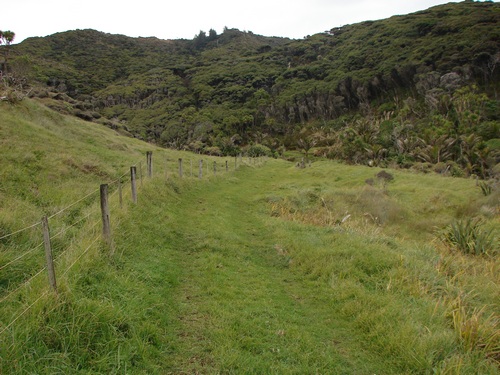
The hillside opposite is a fine example of coastal wind- and salt-sculpted scrub.

We head on up the track. A pair of weathered gateposts are all that survive of a long-gone fence. I wonder what the area looked like when Alice walked the farm with her father. No kikuyu, for starters.
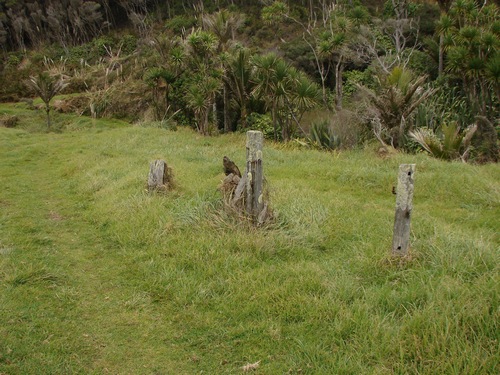
A pohutukawa testifies to some awesome winds coming up the gully from the ocean.
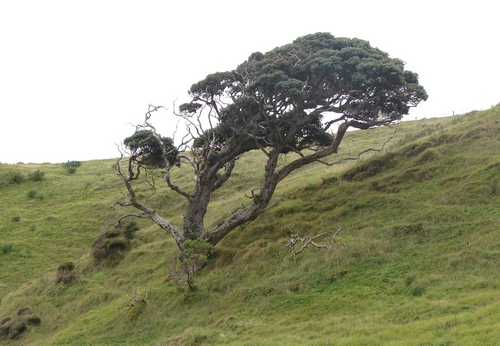
We cross the gully and follow a somewhat scrubby track uphill.
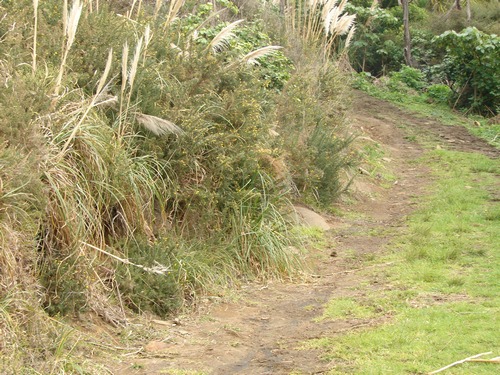
A young whau catches my eye in its lush tropical greenness
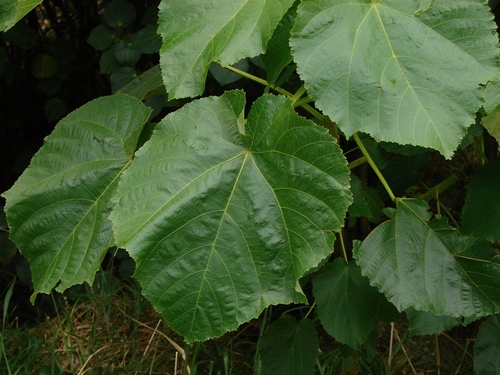
and as we head up the hill, we find a big patch of them
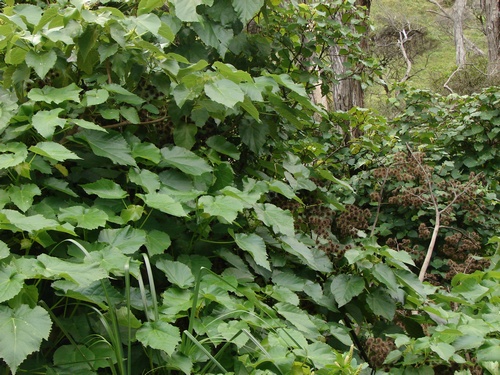
I think the whau flower is among the most beautiful in the New Zealand bush, but even though the seasons appear to be crazy this year, we shall probably have to wait a month or two before we see them.
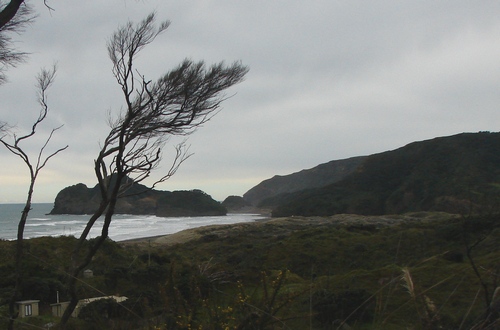
Behind us we can see right back to where we started, and one of the features of this walk will be the recurrence of this view from successively higher altitudes as we make our way up the ridge.
There's still plenty of uphill ahead.
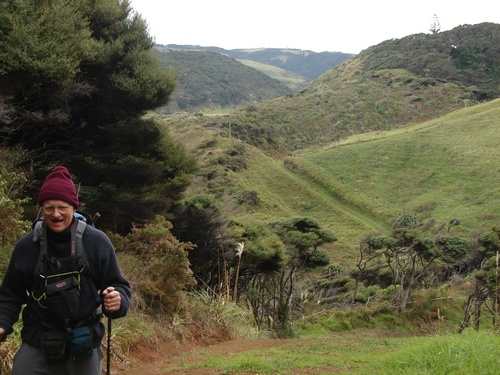
We appear to have reached an area of pasture separated by scrub from the beach below.
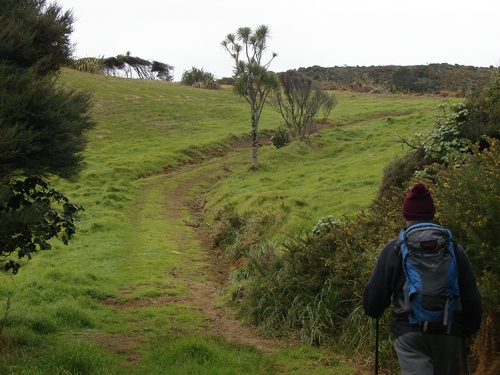
Obituary:
Alice Woodward
(http://www.nzherald.co.nz/section/1/story.cfm?c_id=1&objectid=3570756)
12:00AM Saturday June 05, 2004
By Phoebe Falconer
Bethells Beach pioneer. Died aged 104.
Alice Woodward's mother died from tuberculosis when Alice was just a year old.
Her father, John Bethell, concerned that the disease might strike again, kept his youngest daughter out of school, fearing for her fragility. Alice Dorothy Woodward died last month aged 104.
With school time at a minimum, Alice went everywhere with her father - on the farm at Bethells Beach on Auckland's west coast, trips to Waitakere, visits to Te Kawerau Maori settlement at nearby Waiti, and fishing.
She became skilled at baiting hooks using a hair from her head to tie mussels on, a trick she learned from the girls at Waiti.
She was the youngest of seven children in the Bethell family and company was never a problem in the increasingly settled Bethells/Te Henga area.
With the beach becoming a tourist destination, the Bethells would accommodate visitors who arrived by train at Waitakere station and walked the rest of the way, or from the boat at Whatipu.
Education was a dilemma so land was bought in Avondale and a house built as a winter base, from which Alice attended Auckland Girls Grammar School.
She always felt, though, that her best education came from the visitors to Te Henga farm.
One regular was Alfred Shrewsbury, an Oxford don who papered his room with prints from catalogues from the Tate Gallery, London, and dressed formally on Sundays with a top hat and spats.
One young man who visited Te Henga frequently after World War I was William Woodward, a lawyer about to take up a position as Crown Prosecutor in Western Samoa.
He proposed two days before his departure, Alice accepted, and then spent the next six months gathering up a tropical trousseau, having piano lessons and learning to waltz.
She sailed off with her prospective mother-in-law and was married at the age of 20 in Apia.
William's diary records his thoughts: "We have been married two days, and what I loved in Alice by guess before, I now find less than the reality.
"I knew she was the dearest and now I know she is the finest girl."
The couple had four children in the next 10 years - John, Dorothy, Elizabeth and Mary - and William was appointed Chief Judge of Western Samoa.
Life for senior civil servants and their families was interesting and enjoyable, with balls and tennis parties at Government House, which had been author Robert Louis Stevenson's home, Vailima.
The idyll was brought to an end by the Mau revolt against colonial government, and the family moved back to New Zealand, where William was appointed stipendiary magistrate in New Plymouth. They settled at Maranui, a large old house with gardens, orchards, bush and a paddock.
Son Denis was the last addition to the family.
The family renewed their links with Te Henga and the Bethells during this time, by spending summer holidays at the beach.
When William returned to work, leaving the family with no transport, fishing became necessary for survival.
In the late 1960s the family moved to Auckland and settled in Lochiel Rd, Remuera.
After William's death in 1970, Alice set off on her own to visit her elder son, John, and his wife, Adair, in Ethiopia, where he was working for a refugee organisation.
The unsettled political climate made life interesting, and journeys were made with Adair driving the car and Alice riding shotgun, armed with her son's pistol in case of danger.
The only thing that really frightened Alice in Addis Ababa was the sound of hyenas howling outside the compound fence.
In 1995, she moved to a retirement home, and died there on May 14.
Her funeral service was enhanced by an oratory delivered by Te Warena Taua, of Te Kawerau, with whom the Bethells had been associated for so long.
Alice is survived by four children, 18 grandchildren, 28 great-grandchildren and two great-great-grandchildren.
|
|
